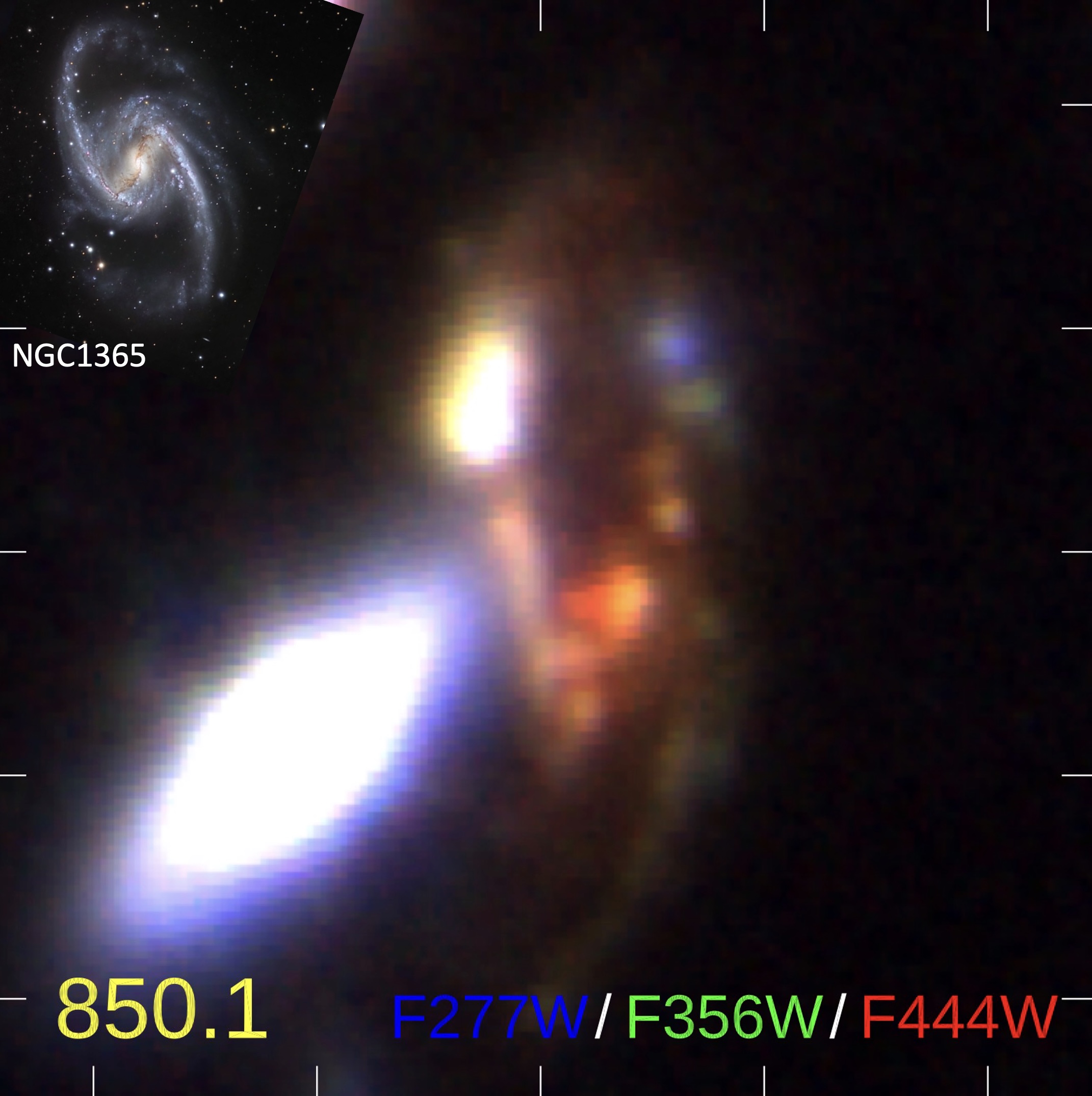News, July 2023
Hidden giants in JWST's PEARLS: An ultra-massive z=4.26 sub-millimeter galaxy that is invisible to HST
Astronomers discover diverse population of dusty star-forming galaxies
 Figure 1 of the paper.
Figure 1 of the paper.
Astronomers from the Centre for Extragalactic Astronomy have used the James Webb Space Telescope (JWST), as well as five other observatories, including the Submillimeter Array (SMA), to study two distant galaxies, 850.1 and 850.2. These galaxies were discovered behind a foreground massive cluster which magnifies the images of the two sources that are seen at a time when the Universe was only 10% of its current age (a redshift of z=4.26). The team of astronomers investigated the stellar, Interstellar Medium (ISM), and dynamical properties of these galaxies. Both galaxies are vigorously forming stars and are surrounded by large quantities of dust, but they display very different properties: Galaxy 850.1 is undetected in Hubble Space Telescope images (and also at optical wavelengths with JWST), showing that it is very red, while galaxy 850.2 is surprisingly blue. The researchers's analysis revealed that galaxy 850.1 is one of the most massive and dust-obscured systems known in the distant Universe, while galaxy 850.2 is one of the least massive and least obscured members of the dusty star-forming population. Moreover, they find evidence in galaxy 850.1 of spiral arms and a stellar bar, making it one of the earliest examples of a galaxy with these features known. This illustrated in the figure using the JWST imaging and shown compared to the local barred-spiral galaxy NGC1365. The researchers attribute the presence of these features to the dynamically active environment that the galaxy inhabits: galaxy 850.1 is likely to be the central galaxy of a small group, with 850.2 a satellite galaxy in that group that will subsequently merge into 850.1 growing that galaxy even more. This study demonstrates the wide range of properties that can be observed among dusty star-forming galaxies in the early Universe. These results also highlight the limitations of previous studies of galaxies at high redshifts relying on observations at the shorter wavelengths detectable from the ground or with Hubble Space Telescope, compared to the longer-wavelength view now provided by JWST.



